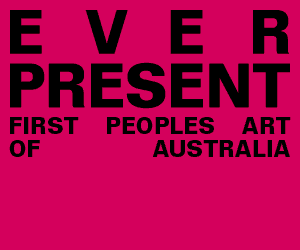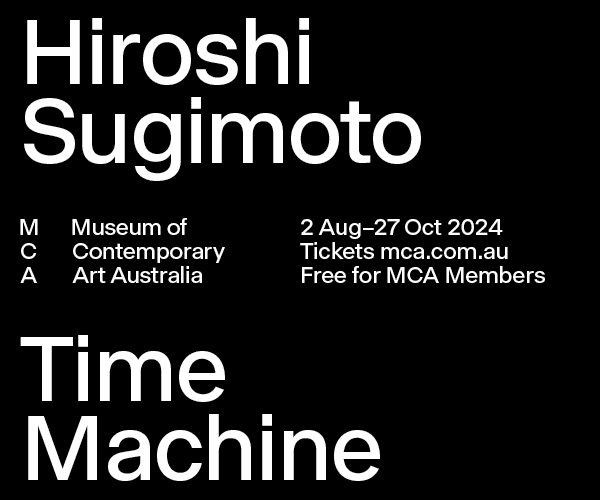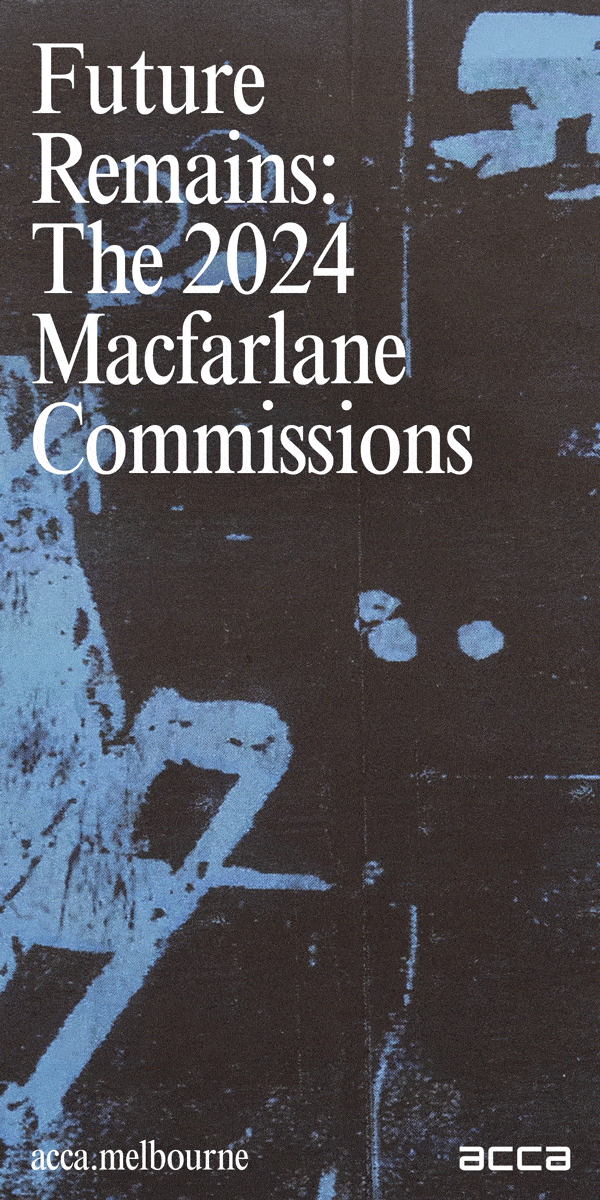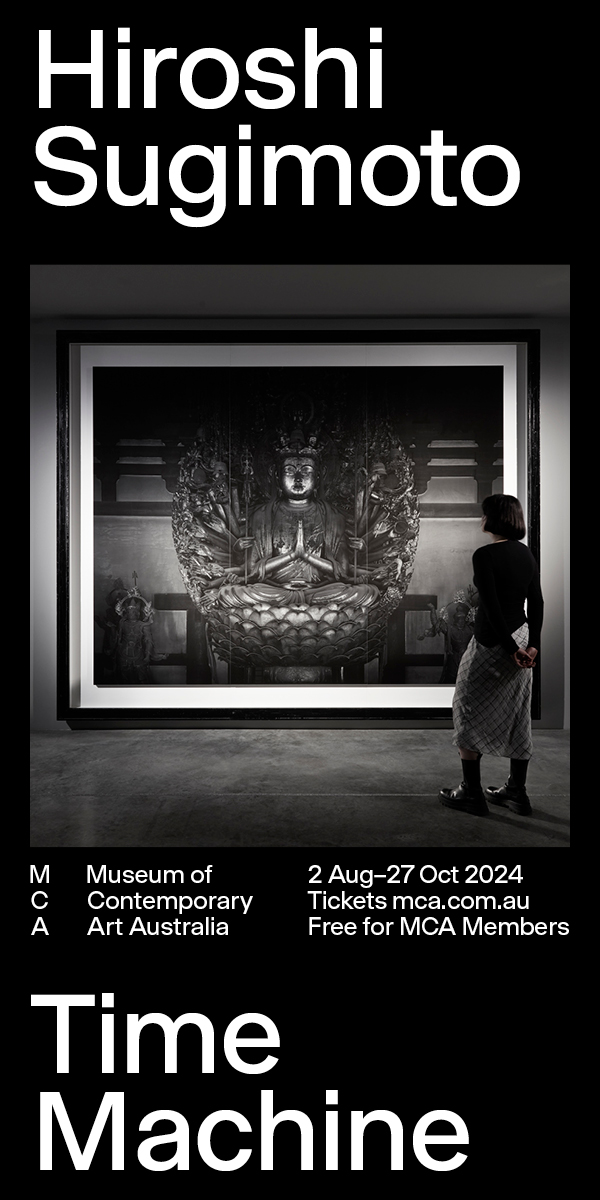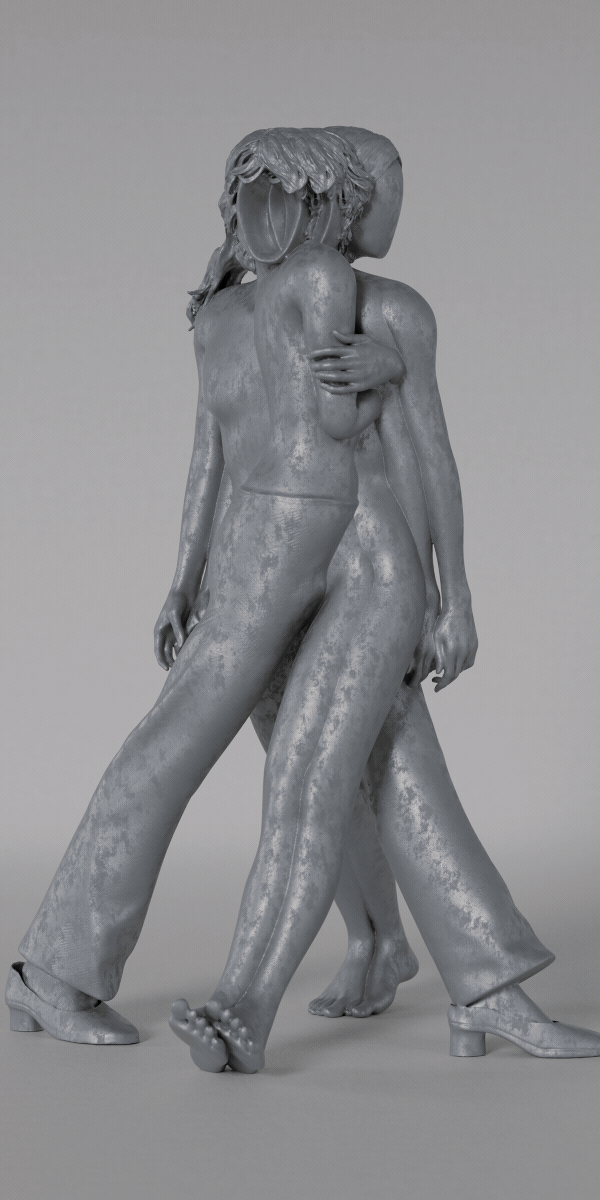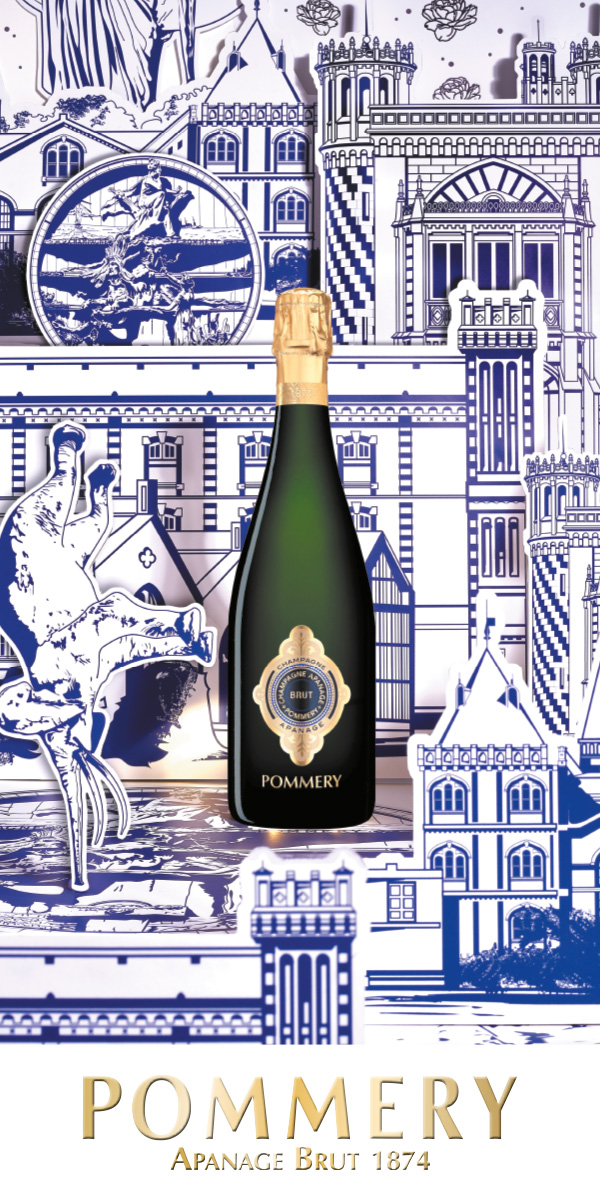Marco Fusinato’s Desastres
A conversation in Venice between Beau Lai and Australia’s representative at La Biennale di Venezia 2022, Marco Fusinato, about his experimental noise project that takes the form of a durational solo performance as installation.
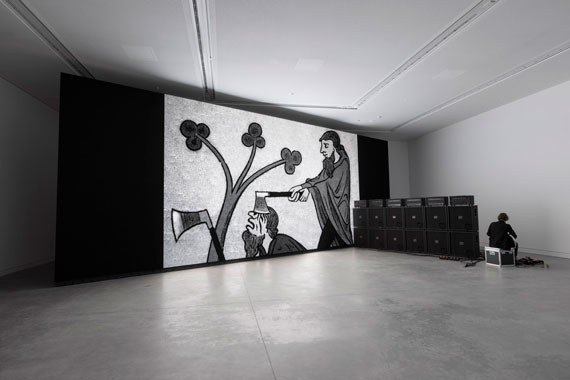
Image credit: Marco Fusinato, DESASTRES, 2022, solo durational performance as installation, 200 days, Installation view, Australia Pavilion, 59th International Art Exhibition of La Biennale di Venezia, 2022. Photo: Andrea Rossetti. Courtesy the artist and La Biennale di Venezia
Marco taught me how to make a caffè corretto in the style of his home province of Belluno, the most northern region of Veneto. There’s a precise structural framework necessary in executing this punchy yet rounded ‘breakfast’. One shot of espresso in an espresso cup, cup placed on a saucer, a sprinkle of sugar, a splash of grappa and a firm-handed stir with a teaspoon. Marco calls it the taste of the contadini (the pre-industrial agricultural farmer or peasant).
He recalled to me how, when he and Nick Roux were setting up the work, they’d be drinking so many caffè corretto’s that Nick’s face would go bright red. After I learnt how to make them, I’d make them for friends passing through or for attendants working at other pavilions. The beverage would be received with either keen enthusiasm or a tightly pinched face and a wince.
For the first six weeks of the 59th La Biennale di Venezia, I worked as a gallery attendant to the Australian pavilion through the Australia Council for the Arts – the feature work being, of course, Marco Fusinato’s DESASTRES, curated by Alexie Glass-Kantor. During this time, I got to observe the work continue to develop alongside audiences and observe its reception. I think there is a similar response to Fusinato’s work as there is to the caffè corretto – the difference being that the punch is visual and auditory rather than taste-based. The commonality is that whether or not you find the work or the drink delicious, there’s no way in hell you will be forgetting the experience of it anytime soon.
I had the privilege of sitting down with Marco over some beers to discuss the immediacy and longevity that his work holds within itself.
I’m so glad that I was working for the first six weeks of La Biennale because a highlight of this experience has been watching you get a feel for DESASTRES. I think the most similar analogy I can use is Frankenstein’s monster. You’ve created this mammoth of a machine that is so aggressive sensorily but at the same time, even though it’s so alive and so in your face, it’s also so fragile. It’s been captivating watching you play and figure out how to have a dialogue with it. In the beginning, I was wondering if it would get boring after you figured it out, because the thing that captivated me the most was witnessing you have to be tender and establish an intimacy with this raging mass of tech and sound gear. Now I feel like you’ve progressed to the point where you’re pushing the direction of the noise in so many different ways, which I could never have imagined. There’ll still be at least two or three times a week where you’ll start doing something new and my jaw will drop to the floor because I didn’t see it coming. And I feel it’s made me realise that there’s a limitless capacity for where you can go with this. And you’re only one-eighth of the way in as well, which is insane.
Yeah, that’s certainly how I feel. It is limitless. The beauty of it is the more time spent with it, the more possibilities there are. There’s more to investigate. There are more variations. There’s more subtlety, there’s more to discover. And that’s the beauty of this kind of durational project. I’m approaching my performance in a particular way, especially as it’s all being documented for a possible residual work featuring daily video footage from the camera that sits on the floor and the 12 channels of audio from each speaker cabinet. In order for me to concentrate and make sense of time, I think of it in 20-minute blocks of sound that trigger images. The reason I think of it as 20-minute blocks is because that’s the length of one side of an LP and I usually record with that in mind. That length of time is something that I can navigate, think through, create an experience for. I’m still working out my relationship with the custom control unit and there’s been a lot of progress, but I feel like there’s so much more to play with and discover.
It makes sense when you talk about seeing it as like a continuous LP. I reckon the work has settled a little bit from the first few weeks; it feels like it’s moved to more of an even pace.
Alexie said in that first week, it was like giving a 17-year-old kid the keys to a Lamborghini. I was just letting it rip. And part of not knowing what the gear could do was me responding by maxing it out … volume … just ballistic. I was also aware that there’s a crowd there who are super critical but also ignorant of the underground sub-culture this comes from. So, I just thought to give it to them in extremis, you know, to kind of like, say, “Hey, fuck you … If you’re into it, you’ll stay in the room, if you’re not, you’re going to leave.” And I wanted it to be confronting, I wanted to make it as intense as possible. Since then, I’ve been trying to work out more nuanced, dynamic ways of playing, primarily due to the durational nature of the project.
You’ve been here for 40 days now. I think I’ve been working maybe 32 days out of those 40 days. And there was a point I was going to make about that which I’ve completely forgotten …
Well, you’ve seen this kind of evolution. You’ve seen it being sculpted into something. I’m wanting it to be open enough that it can take me somewhere. Initially, I thought there’d be a focus on harsh noise but because of the reverberation of the room it’s really focused on saturated feedback and a sequence of down tuned ‘corrupted’ chords with a lot of panning of sound and image, you know, really trying to create a spectral phenomenon. The pavilion becomes the instrument.
It seems like you’ve created this mega-instrument all its own. There’re so many different considerations you have that aren’t just noise, but also movement of light and image at the same time.
It’s very much about trying to move vibrations of air and radiant light. They’re the two ephemeral elements that create the physical experience for the audience. They are powerful forces to work with, to sculpt with, on a daily basis. And that was always the intent, to create some kind of hallucination, elation from disorientation and a complete exhaustion from confusion.
The Australia Council for the Arts is the commissioner for Australia’s national participation in the 59th International Art Exhibition of La Biennale di Venezia.
La Biennale di Venezia runs until November 27, 2022.
Marco Fusinato is represented by Anna Schwartz Gallery, Melbourne.
annaschwartzgallery.com
labiennale.org/en/art/2022

Image credit: Marco Fusinato, DESASTRES, 2022, solo durational performance as installation, 200 days, Installation view, Australia Pavilion, 59th International Art Exhibition of La Biennale di Venezia, 2022. Photo: Andrea Rossetti. Courtesy the artist and La Biennale di Venezia
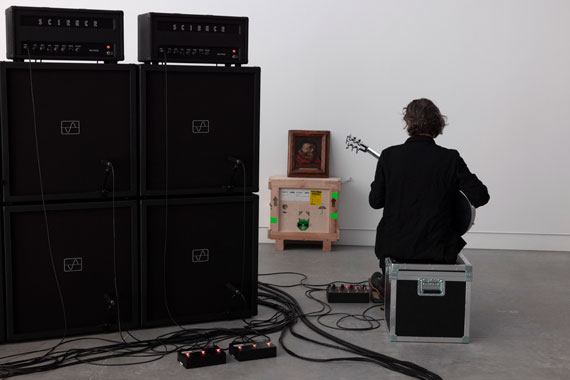
Image credit: Marco Fusinato, DESASTRES, 2022, solo durational performance as installation, 200 days, Installation view, Australia Pavilion, 59th International Art Exhibition of La Biennale di Venezia, 2022. Photo: Andrea Rossetti. Courtesy the artist and La Biennale di Venezia

Image credit: Marco Fusinato, DESASTRES, 2022, solo durational performance as installation, 200 days, Installation view, Australia Pavilion, 59th International Art Exhibition of La Biennale di Venezia, 2022. Photo: Andrea Rossetti. Courtesy the artist and La Biennale di Venezia





